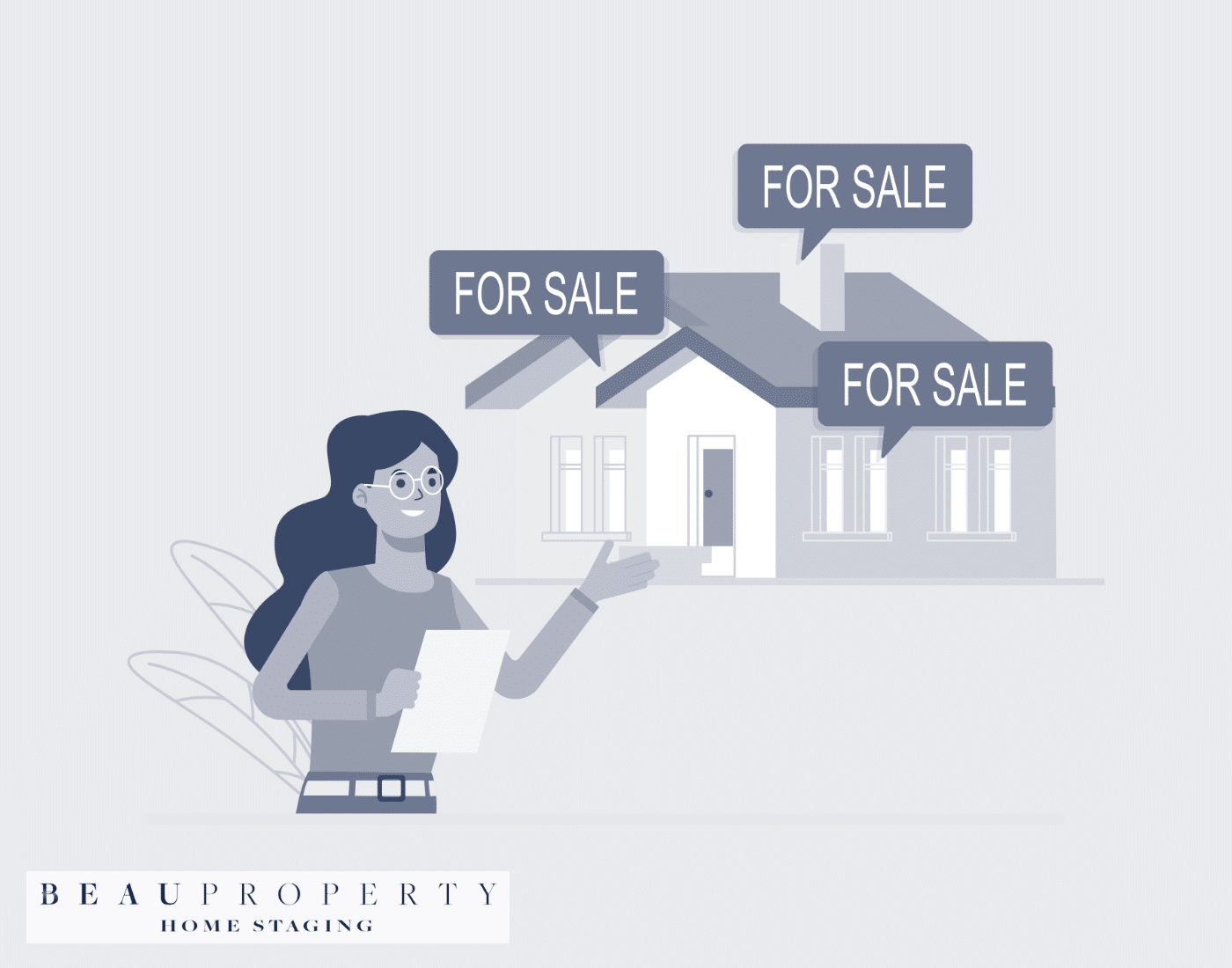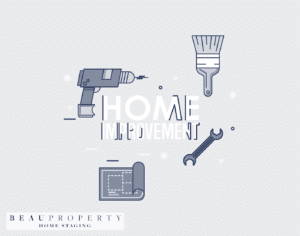Understanding the Market
Research Local Real Estate Trends
To successfully navigate the housing market, begin by researching local real estate trends. Examine historical data, current market conditions, and future projections. Local real estate websites and news portals can provide valuable insights. Pay attention to trends in housing prices, the number of transactions, and how long properties stay on the market.
Identify the Best Time to Sell in Your Area
Timing is crucial in real estate. The best months for selling are typically May to June, with homes listed in March often receiving higher offers. Conversely, avoid listing during the winter months, especially in November and December, when buyer activity is low due to holidays and weather conditions.
Analyse Comparable Home Sales
Comparable home sales, or “comps,” are essential for pricing your home competitively. Review recently sold homes in your neighbourhood that are similar in size, age, and condition. This will give you a benchmark for setting a competitive price. Evaluate the sale prices, time on market, and any unique features that might have influenced the final sale price.
By understanding local market trends, identifying the optimal time to sell, and analysing comparable sales, you set a strong foundation for a successful home sale. As you proceed, focus on establishing a strategic price, which can significantly impact your home’s appeal and selling speed.
Pricing Strategy
Setting a Competitive and Attractive Price
The key to selling your home quickly and for the most money lies in setting a competitive and attractive price. This involves analysing local market data and comparable home sales. By relying on this information, you can avoid the common pitfall of letting personal attachment inflate your price expectations.
Pricing Slightly Below Market Value
An effective tactic to attract potential buyers is to price your home slightly below market value. This method tends to view your property as a bargain, especially in tight markets with low inventory. This approach can lead to a higher final sale price, as it generates more interest and competition among buyers.
Being Prepared to Negotiate
Negotiation is an intrinsic part of the home-selling process. It is essential to be flexible and prepared to counter-offer. Understanding your bottom line ahead of time will allow you to respond to offers confidently without compromising your goals.
Setting the right price, considering strategic underpricing, and being prepared to negotiate sets a strong foundation for a successful home sale.
Next, we’ll explore how to find the right real estate agent to guide you through this process.
Hiring a Top Real Estate Agent
Interview Multiple Agents
When hiring a top real estate agent, the first step is to interview multiple candidates. This strategy helps you understand the market better and allows you to find the agent best suited to your needs. Start by asking pertinent questions that reveal their strategies and expertise. Inquiring about their approach to selling homes and their history with past clients can provide valuable insights. Remember, you are looking for someone who aligns with your specific goals and expectations.
Look for Local Market Expertise
Local market expertise is crucial when selecting a real estate agent. A knowledgeable agent will understand neighbourhood nuances, pricing trends, and buyer preferences. This insight is invaluable when setting your home’s price and creating a marketing plan. Local market knowledge also plays a role in negotiating deals and understanding the value implications of various property features.
Consider Their Marketing Strategies and Track Record
An agent’s marketing strategy and track record can significantly impact the sale of your home. Check their online presence, including their website, social media, and client reviews. Look for indications of their ability to attract potential buyers and facilitate a smooth sales process. Successful agents often have a high volume of home sales in your price range, a high sale-to-list price ratio, and lower than average days on market. By examining these factors, you can gauge their effectiveness and reliability.
Efficiently hiring a top real estate agent sets the stage for all subsequent steps in selling your home. From their pricing strategies to their market knowledge, a good agent can influence every aspect of the selling process.
Enhancing Curb Appeal
Improving Landscaping and Exterior Appearance
Enhancing your home’s curb appeal is crucial, especially when aiming for a higher sale price. Begin with the landscaping. A well-manicured lawn with established trees and shrubs can transform your home’s exterior. Regularly mow the grass, rake leaves, and keep the garden free from weeds. Adding fresh greenery and flowers can create a welcoming environment that appeals to potential buyers. Container gardens can add colour and charm swiftly and affordably.
Curb appeal isn’t just about plants; even simple tasks like power washing hard surfaces such as driveways and walkways can make a significant difference. A clean exterior suggests a well-maintained home, which is appealing to buyers.
Making Necessary Repairs to the Exterior
Address any visible damage to your home’s exterior. This includes repairing or replacing roof shingles, fixing broken lighting fixtures, and attending to any cracked or peeling paint. These small repairs not only enhance the aesthetic but also protect the house from further damage.
Ensure that your gutters are clear of debris and functioning properly. Replace any outdated or damaged mailboxes and upgrade or clean the house numbers for a polished look.
Adding Welcoming Touches
Welcoming touches like potted plants at the entrance can significantly boost your home’s appeal. Choose pots that complement your home’s exterior colour scheme. Plants and flowers create a warm and inviting vibe, attracting buyers and even pollinators like hummingbirds and butterflies.
Consider adding exterior wall art made from weatherproof materials. This not only adds intrigue but also covers any imperfections on your exterior walls. Look for weatherproof materials like powder-coated metal, stainless steel, or ceramic, and make sure they are securely hung to withstand heavy winds.
Enhancing curb appeal sets the foundation for not just attracting potential buyers but also improving overall neighbourhood aesthetics. Next, we dive into how interior improvements can further increase the attractiveness of your home.
Interior Improvements
Kitchen Updates
Minor kitchen upgrades can significantly boost your home’s appeal. Focus on adding a kitchen island, which potential buyers find highly desirable. Kitchen islands provide extra counter and storage space and can make the kitchen feel larger. Be sure to budget for both materials and labour, which can range between £4,000 and £10,000 depending on the scope of the project.
Updating or replacing cabinets is another cost-effective improvement. If new cabinets are too expensive, consider painting or refinishing them. This makeover can modernise the space without the high costs associated with complete replacements. Upgrading appliances to energy-efficient models can also enhance both functionality and appeal, especially with the ongoing trend towards environmentally friendly homes.
Bathroom Upgrades
Bathroom renovations also offer a high return on investment. Focus on minor updates like replacing outdated fixtures, adding a modern vanity, or swapping out old tiles. A mid range bathroom remodel can offer a return on investment (ROI) of around 72.7%. Simple changes like repainting, reglazing bathtubs, and updating faucets can yield a substantial increase in home value.
Replacing a standard bathtub with a spa shower, installing new countertops, and adding additional storage can also be appealing to potential buyers. These upgrades improve functionality and aesthetics, which are key factors in creating a desirable bathroom space.
Energy-Efficient Improvements
Installing energy-efficient windows, insulation, and lighting not only makes your home more eco-friendly but also adds value. Buyers today are increasingly looking for homes that offer lower utility bills and are more sustainable. Adding smart home features like programmable thermostats can further enhance your home’s appeal.
Implementing these strategic upgrades can make your home more attractive to buyers and increase its market value.
Moving forward, it’s important to consider decluttering and depersonalising your home to create a welcoming and neutral environment for potential buyers.
Decluttering and Depersonalising
Remove Personal Items and Excess Furniture
To help potential buyers imagine themselves in your home, start by removing personal items. This includes family photos, memorabilia, and any personal collections. Keep your personal touches to a minimum, creating a blank canvas for buyers. Removing excess furniture can also make rooms appear larger and more inviting.
Clearing clutter from surfaces, such as countertops, dressers, and side tables, is crucial. Simplify spaces by maintaining only essential items, allowing the room’s features to stand out. Aim for a minimalist approach by paring down furniture to the bare necessities, which can make the home feel more spacious and functional.
Organise Closets and Storage Spaces
Potential buyers will likely inspect storage areas to ensure their own belongings will fit. Organise closets by removing excess clothing, shoes, and other items not frequently used. Maintain a clean and neat appearance by using matching hangers and keeping the floor clear. An organised space can make a strong positive impression, suggesting that the home has been well-maintained.
Use bins or baskets to keep smaller items sorted and stored away, giving a tidy look. Transparent bins are practical but opt for opaque ones during showings to maintain a clean, uniform appearance. Sorting clothes by type or colour can also help maximise the visual appeal of your closets.
Create a Neutral, Appealing Environment
Depersonalising your home extends beyond removing personal items. It also involves creating a neutral, universally appealing environment. Opt for neutral colours on walls and furniture, avoiding bold patterns that might not suit everyone’s taste. Simple, neutral decor pieces like plants or understated art can add welcoming touches without overwhelming potential buyers.
Consider replacing heavy drapes with lighter fabrics to let in more natural light, making your home feel airy and inviting. Ensure that each room is well-lit and free from any overly personal or eclectic styles that could hinder a buyer’s ability to envision the space as their own.
Decluttering and depersonalising not only enhances a home’s appeal but also facilitates the staging process, presenting your property in its best light. Ultimately, these steps help potential buyers see the home as a place where they could live, increasing the likelihood of a quick and successful sale.
Professional Home Staging
Highlight Your Home’s Best Features
Professional home staging is an effective way to showcase your property’s unique qualities and increase buyer appeal. Start by identifying and accentuating key features that make your home stand out, such as spaciousness, natural light, or architectural details. Use furniture and decor to draw attention to these elements, ensuring that your home looks both inviting and functional. Even minor adjustments like strategic furniture placement can significantly impact a buyer’s perception.
Create an Inviting Atmosphere
An inviting atmosphere can make all the difference when selling your home. Cleanliness and a neutral colour palette are essential, as they allow potential buyers to imagine themselves in the space without distraction. Deep cleaning, fresh paint, and updated lighting can transform your home into an appealing, move-in-ready option. Adding small touches, like fresh flowers or scented candles, can also enhance the ambiance and make your home feel more welcoming. A comprehensive staging approach, spotlighting both aesthetics and functionality, can significantly boost your home’s attractiveness.
Consider Virtual Staging for Online Listings
Traditional staging might not always be feasible, particularly if the property is vacant or if budget constraints are an issue. In such cases, virtual staging provides an effective alternative. By digitally furnishing and decorating photos of your home, virtual staging can create compelling online listings that attract more interest. Services like Styled offer affordable and realistic virtual staging options, transforming empty rooms into stylish living spaces. This method is not only cost-effective but also time-efficient, enabling you to present your home in the best possible light to a vast online audience.
By implementing professional home staging techniques, you can enhance your property’s appeal and create a memorable first impression for potential buyers.
High-Quality Photography and Virtual Tours
Investing in Professional Real Estate Photography
Investing in professional real estate photography is crucial in presenting your home in the best possible light. High-quality images are free from blurriness and distortions, creating a professional appearance and engaging potential buyers. Listings with professional photos get 61% more views than those without them, providing a significant advantage in a competitive market. Professional photos can create an emotional connection, making it easier for buyers to envision themselves in the space, thereby increasing the chance of a successful sale.
Creating Virtual Tours or 3D Walkthroughs
Virtual tours and 3D walkthroughs provide prospective buyers with an immersive experience. They allow potential buyers to explore the property from the comfort of their home, which is particularly advantageous in today’s digital age. These tools can save time for both sellers and buyers, offering an efficient and innovative way to view properties at any time. Virtual tours are available 24/7, making it easy for clients to view homes on their own schedule, which can lead to more qualified leads and faster sales.
Showcasing Your Home’s Best Features
High-quality photography and virtual tours ensure that your home’s best features are highlighted. Professional photographers know how to use lighting, angles, and composition to capture your home in the most flattering way. Using a DSLR camera, for example, ensures each image is depicted with exceptional clarity and detail. Utilising tools such as wide-angle lenses can also help to showcase expansive interiors, making rooms appear larger and more inviting. By investing in these technologies, you can ensure that your property stands out in online listings, attracting more potential buyers and driving interest.
With these strategies in place, prepare to leverage the visibility and appeal of your home to potential buyers.
Pre-Listing Home Inspection
Identify and Address Potential Issues Early
Conducting a pre-listing home inspection is a proactive measure that can significantly streamline the selling process. By identifying issues before listing, you have the opportunity to make necessary repairs, which can prevent last-minute negotiations or delays. This approach allows you to address both minor and major defects early on, ensuring your property is in optimal condition. This not only improves the home’s appeal but also reduces the risk of discovering deal-breaking issues later in the process.
Provide Transparency to Potential Buyers
Transparency is key to building buyer confidence. When you conduct a pre-listing home inspection, you can offer potential buyers a detailed report, showcasing the property’s condition upfront. This transparency helps to alleviate buyer concerns over hidden problems and demonstrates your commitment to providing a quality home. The clarity provided by an inspection report can position your property more favourably compared to others on the market, as buyers can proceed with confidence knowing the exact state of the home.
Consider the Pros and Cons of Disclosing Known Issues
Disclosing known issues has its benefits and drawbacks. On the positive side, being upfront about the home’s condition can foster trust and pave the way for smoother negotiations. Buyers appreciate honesty, which can lead to quicker sales and less haggling. However, disclosing too many flaws might deter some buyers. It’s important to weigh the pros and cons carefully and consult with your real estate agent to decide the best course of action based on your specific situation.
Engaging in a pre-listing inspection not only showcases your responsibility as a seller but also helps set expectations and facilitates a smoother transaction. Moving forward, focusing on effective marketing strategies will further enhance your chances of a swift sale.
Effective Marketing Strategies
Utilise Online Listings and Social Media
To effectively market your home, leveraging online platforms is essential. Post new listings on popular social media channels like Facebook and Instagram to attract prospective buyers. Highlight your home’s unique features with high-quality images and engaging descriptions. These platforms allow for targeted ads, ensuring your posts reach potential buyers actively searching in your area.
Host Open Houses and Private Showings
Both open houses and private showings have unique advantages. Open houses can attract multiple prospects at once, creating a competitive environment. Meanwhile, private showings offer personalised experiences, allowing buyers to take their time and ask detailed questions. A combination of both approaches can maximise your home’s exposure and appeal.
Leverage Your Agent’s Network and Marketing Tools
Experienced agents bring a wealth of resources to the table, including a robust network and advanced marketing tools. They can tap into this network to connect with potential buyers and other agents who might have interested clients. Utilise digital marketing strategies such as video tours and email marketing to broaden your reach within the real estate community. Effective networking can significantly enhance the visibility and appeal of your property.
With the right marketing strategy, your home can attract more potential buyers, making the selling process faster and more profitable.
Flexibility and Availability
When selling your home, it’s crucial to prioritise flexibility and availability. These aspects can significantly affect your ability to secure a quick and favourable sale.
Be Accommodating with Showing Times
One of the most effective ways to attract potential buyers is by making your home available for showings as much as possible. Restrictive access policies, such as requiring 24 hours’ notice for showings, can deter potential buyers and reduce interest in your listing. Instead, maintain an open schedule that accommodates short-notice visits. This strategy ensures that more prospective buyers can view your property, increasing the chances of a quick sale.
Respond Quickly to Inquiries and Offers
Prompt responses to inquiries and offers are vital in the real estate market. Whether it’s a buyer expressing interest or an agent requesting information, timely communication demonstrates professionalism and attentiveness. A quick response can make the difference between capturing a potential buyer’s attention or losing it. Being responsive signals to buyers that you are serious about selling and value their time.
Be Prepared to Move Fast When You Receive an Offer
When you receive an offer, readiness is key to maintaining momentum. Ensure all necessary documents are prepared in advance to avoid delays during negotiations or the closing process. Understanding the timeline from offer acceptance to closing—typically ranging from 30 to 60 days—can help you plan accordingly. Being prepared to act quickly, including having a flexible moving plan and a willingness to negotiate, can facilitate a smooth and expedient sale.
Flexibility and availability not only help in attracting and engaging potential buyers but also in maintaining a fluid and efficient sales process. A proactive and responsive approach can significantly improve your chances of selling your home promptly and at a favourable price.
Creating Urgency
Creating a sense of urgency can significantly expedite the sale of your home. This chapter delves into techniques that prompt potential buyers to act quickly, leveraging the psychology of limited-time offers, unique home features, and market conditions.
Use Limited-Time Offers or Incentives
Limited-time offers create a compelling urgency for buyers. By introducing discounts or incentives that are available for a short period, you encourage swift decision-making. Examples include:
- Financial Incentives: Offering to cover part of the closing costs or providing a home warranty for offers made within a specific timeframe.
- Unique Offers: Including high-value items like appliances or furniture if the sale is concluded by a set date.
These strategies tap into the fear of missing out (FOMO), which can drive more immediate interest in your property.
Highlight Unique or In-Demand Features
Every home has unique qualities that can be turned into selling points. Whether it’s a newly renovated kitchen, an expansive garden, or proximity to sought-after amenities, these features can be highlighted to attract buyers quickly. Emphasise:
- Renovations: Recent upgrades or renovations that enhance the home’s value.
- Location: Proximity to top-rated schools, parks, or urban centres.
- Exclusive Features: Unique aspects like historical significance or eco-friendly installations.
Pointing out these features can make your property stand out in a crowded market.
Emphasise Scarcity in a Competitive Market
When the market has limited inventory, emphasising scarcity can heighten urgency. Acknowledge the competitive nature and limited availability:
- Low Inventory Mention: Highlight that your home is one of the few available, compelling buyers to act quickly before it’s too late.
- Competitive Offers: Encouraging a sense of competition among buyers, especially during open houses or showing events.
Scarcity signals can prompt buyers to move faster with their offers, often leading to better sale terms for you.
By employing these urgency-creating strategies, your chances of a swift and profitable sale increase substantially. Maintaining this momentum throughout the selling process ensures a smooth transition from listing to closing.
Time is of the essence. Now, let’s shift our focus towards effectively highlighting the surrounding neighbourhood amenities to bolster your home’s appeal.
Highlighting Neighbourhood Amenities
Showcase Local Schools, Parks, and Attractions
Highlighting the proximity to top-rated schools can significantly enhance the attractiveness of your home to potential buyers. Families often prioritise access to quality education, and homes in desirable school districts typically command higher prices. Moreover, being near parks and green spaces also adds value, potentially increasing property prices by up to 20%.
Parks provide recreational opportunities and scenic beauty, which can attract families with children and pets, thereby making your home more appealing.
Emphasise Community Features and Lifestyle Benefits
Community amenities such as walking trails, playgrounds, and communal gardens can enhance the perceived value of your property. These features often foster a sense of community and promote a healthier lifestyle, which are attractive to many buyers.
Walking trails and well-maintained sidewalks make neighbourhoods safer and more walkable, further increasing desirability. Community gardens enhance property values significantly over time by providing a place to gather, engage in recreational gardening, and enjoy fresh produce.
Provide Information on Nearby Conveniences
Proximity to conveniences such as shopping centres, public transport, and healthcare facilities can be crucial selling points. Buyers often look for homes that offer easy access to daily necessities and amenities. A well-connected location with robust infrastructure can significantly enhance your property’s appeal and value.
Location remains one of the most critical factors for buyers when selecting a home. Ensuring that potential buyers are aware of the benefits of your property’s location can provide a competitive edge in the market.
These elements can play a significant role in setting your property apart from others in the market. By effectively showcasing neighbourhood amenities, you can boost the attractiveness and value of your home in potential buyers’ eyes.
Offering Buyer Incentives
Enhancing your home’s attractiveness to potential buyers involves offering appealing incentives. These enticements can be crucial for speeding up the sale and achieving a satisfactory price.
Include Appliances or Furniture
One effective strategy is to offer appliances or furniture as part of the sale. Modern, energy-efficient appliances can be particularly enticing. They eliminate the buyer’s need to budget for these items post-purchase and can serve as a compelling incentive. Including furniture can also offer negotiation flexibility, allowing sellers to adjust offers based on buyer preferences.
Cover Closing Costs
Another impactful incentive is offering to cover closing costs. This gesture can significantly decrease the buyer’s upfront expenses, making your property more attractive. Seller-paid closing costs can cover various fees, including property taxes, attorney fees, and appraisal inspections. Such concessions are particularly advantageous in buyer’s markets, where competition among sellers is intense.
Provide a Home Warranty
Offering a home warranty provides buyers with peace of mind, knowing they are financially safeguarded against unexpected repairs. Homes with warranties tend to sell faster as buyers feel more confident in their purchase. This assurance can differentiate your listing from others and encourage prompt offers.
Offering these incentives can significantly enhance your home’s appeal. As you prepare to negotiate offers, having these buyer-friendly strategies in place can position you favourably in a competitive market.
Preparing for Negotiations
Understanding Your Bottom Line
Knowing your bottom line is crucial in the home selling negotiation process. This figure represents the lowest price you can accept for your home without compromising your financial goals. It’s essential to keep this number private to maintain leverage during negotiations. Your real estate agent, although your advocate, should not disclose this information to potential buyers. Revealing your bottom line can weaken your negotiating stance by setting a fixed expectation that buyers might aim to meet or undercut.
Be Prepared to Counter-Offer
Effective negotiations often involve multiple rounds of counter-offers. As a seller, you may receive offers that do not meet your expectations. In such cases, counter-offering is a strategic way to move closer to your desired sale price. Consider setting an expiration date on your counter-offer to create a sense of urgency and prevent prolonged uncertainty. You may also offer to cover a portion of the buyer’s closing costs or include appliances and furnishings to make your counter-offer more attractive.
Considering Non-Price Factors in Negotiations
While price is a significant factor, non-price terms can also play a pivotal role in successful negotiations. Factors such as the closing timeline, contingencies, and which party will handle specific repairs can be points of negotiation. Some potential concessions might include agreeing to a buyer’s request for an early move-in or adjusting the possession date to suit their needs. Creativity and flexibility in these areas can sometimes bridge the gap between differing price expectations, leading to a win-win situation for both parties.
To navigate negotiations effectively, understanding your own needs and priorities alongside those of potential buyers is key. The ability to strategically counter-offer and consider non-price factors will position you better for a favourable outcome. This readiness to negotiate can smooth out potential bumps along the way, setting the stage for a successful sale.
Streamlining the Closing Process
Have All Necessary Documents Prepared in Advance
Efficiently streamlining the closing process begins with meticulous preparation. Gather and organise essential documents well before the closing date. These include the purchase agreement, title inspection, and any agreed-upon repairs or adjustments. Maintaining an organised paperwork trail ensures that no important steps are overlooked, which could delay closing.
Address Any Potential Roadblocks Early
Encountering roadblocks during the closing process can be frustrating. Proactively addressing common issues can prevent unexpected delays. Financing issues, low appraisals, and title problems are often culprits in postponed closings. Work closely with your agent to identify and resolve these issues early on. For instance, getting a pre-approval for your mortgage can ward off financing troubles, whereas title searches can reveal and rectify ownership issues before they become problematic.
Be Responsive During the Closing Period
Staying responsive throughout the closing period is crucial. Promptly address any inquiries from your real estate agent, the buyer, or the buyer’s lender. This responsiveness can significantly reduce the likelihood of miscommunication and delay. Additionally, ensure that all requested documents and information are provided quickly.
Proper documentation, early problem-solving, and maintaining open communication lines all contribute to a smooth closing process. This proactive approach aids in avoiding unnecessary stress and ensures a streamlined transition, paving the way for the next steps without any hitch.
Leveraging Technology
Use Smart Home Features as Selling Points
Smart home technology boosts market value and attractiveness to buyers. Features like smart thermostats, lighting, and security systems can enhance convenience, energy efficiency, and security. These devices can make homes more appealing and easier to sell. Appraisers often adjust valuations based on tech-enabled homes versus traditionally equipped ones, commanding higher prices. Homes with these features often sell faster and at better terms, making them a wise investment for sellers.
Offer Virtual or Video Tours
Virtual tours are increasingly vital in the real estate industry. They provide a personalised and convenient way for prospective buyers to explore properties, reducing the need for in-person visits while highlighting key home features. Offering virtual tours can give your property a competitive edge, making it more attractive to tech-savvy buyers. Additionally, they are cost-effective and can be done with minimal expense, making them an excellent marketing tool.
Utilise Online Tools for Paperwork and Signatures
Embrace digital tools to simplify the closing process. Electronic signature platforms streamline real estate workflows by reducing paperwork and simplifying the signing process. These tools offer a convenient way to handle transactions, making the process faster and more efficient. Leveraging these technologies can also enhance your responsiveness and adaptability, keeping the process smooth and buyer-friendly.
Embracing technology in the selling process can offer significant advantages, making your property stand out in a competitive market. From smart home features to virtual tours and digital signatures, these tools can simplify and enhance the entire home-selling experience.
Timing the Sale
Consider Seasonal Factors
Understanding seasonal trends is crucial when selling your home. Spring, particularly late May through early June, is the optimal time to list your property. During this period, the days are longer and warmer, which encourages more house viewings. Families also prefer to move during summer so their children can start the new school year without interruptions. Conversely, the winter months, especially December to February, are less favourable due to cold weather and holiday distractions, often leading to reduced buyer interest.
Be Aware of Local Economic Conditions
Local economic factors play a significant role in determining the best time to sell. A booming local economy can stimulate demand for real estate, as more people have disposable incomes and are looking to invest. On the flip side, an economic downturn or recession can deter potential buyers due to job losses and lower consumer spending. Stay updated on local economic trends and adjust your timing accordingly.
Time Your Sale with High Demand Periods
High demand periods in your local market can significantly impact how quickly and profitably your home sells. Research local real estate trends to understand peak buying times. For instance, homes listed in May usually fetch a higher price and sell more quickly than those listed in other months. If your goal is to sell fast, listing your home in July when transactions peak might be best.
Acquire insights into the local market’s highs and lows to strategically time your home sale for the best results. Being mindful of these elements can give you an edge in the competitive housing market, ensuring you maximise both your timeframe and financial return.
By leveraging the right timing, you can set the stage for a successful home sale. Stay tuned for insights on managing your emotions throughout this process.
Managing Emotions During the Sale
Selling a home can be an emotional journey, filled with memories and sentimental value. However, maintaining objectivity is crucial for a successful sale. This chapter will focus on techniques to manage emotions, set goals, and trust your agent’s expertise.
Maintain Objectivity Throughout the Process
Maintaining objectivity helps in making rational decisions. Begin by recognising that your home is a product you need to market. Emotions can cloud judgement, leading to unrealistic pricing or reluctance to make necessary changes. Below are strategies to maintain objectivity:
- Focus on Facts: Base your decisions on market data and not on personal attachment. Understanding local market conditions and comparable sales can provide a realistic view of your home’s value.
- Emotional Detachment: Accept that selling is partly a business transaction. Reflect on your happy memories, but don’t let them interfere with practical considerations. You can read more about managing detachment.
- Professional Guidance: Rely on your real estate agent when emotions run high. They offer an external perspective to help you make informed choices.
Focus on Your Goals Rather Than Emotional Attachments
Setting clear goals can serve as a compass, guiding you through the emotional aspects of the sale. Whether your aim is to relocate, upgrade, or downsize, keeping these objectives in sight will help to stay focused:
- Create a Vision Board: Visualise your future home or the benefits of selling. This can shift focus from what you are leaving behind to what you will gain.
- Regularly Review Goals: Consistently remind yourself why you are selling. This reinforcement steers emotions and helps maintain a positive outlook.
- Seek Support: Share your anxieties and excitement with friends or family. Emotional support can provide comfort and help you stay focused on your goals.
Trust Your Agent’s Advice and Expertise
Trusting your real estate agent is paramount. They possess market expertise and negotiation skills essential for a successful sale:
- Open Communication: Maintain transparency with your agent about your concerns and preferences. This helps them provide tailored advice.
- Rely on Experience: Your agent’s knowledge of local market trends and buyer behaviour turns stressful situations into manageable tasks. Trusting their guidance removes much of the uncertainty from the process.
- Follow Recommendations: When your agent suggests repairs, staging, or pricing strategies, understand these recommendations stem from a desire to maximise your home’s appeal and sale price. Their goal aligns with yours—selling your home swiftly and for the best possible price.
Implementing these strategies can help navigate the emotional complexities of selling your home, making the process smoother and more efficient.
Post-Sale Considerations
Plan for Your Move in Advance
Proper planning is essential for a stress-free move once your home sells. Start preparations at least eight weeks before you plan to relocate. Begin by decluttering and deciding what to keep, donate, or discard. Create a checklist of tasks such as transferring utilities, changing your address, and notifying relevant parties about your move. This methodical approach can make the process smoother and less daunting.
Additionally, coordinate with your buyers to schedule the move-out date and ensure a seamless handover.
Ensure a Smooth Transition for the New Owners
A smooth transition for the new owners is essential for maintaining goodwill and avoiding post-sale complications. Make sure to address any agreed-upon repairs or maintenance tasks before moving out. Leaving a clean and organised home can set a positive tone for the new occupants.
Consider providing a welcome packet that includes essential information such as:
- Instruction manuals for appliances
- Contact details for local services (e.g., utilities, waste management)
- Neighbourhood tips and recommendations
Such thoughtful gestures can make a significant impact and ensure a positive experience for the new owners.
Maintain Positive Relationships for Potential Referrals
Building and maintaining positive relationships with your buyers can lead to potential referrals—a key component of any successful real estate transaction. Keep communication lines open and show your appreciation through thank-you notes or small tokens of gratitude. Trust is fundamental; delivering on promises and managing expectations can foster strong bonds and encourage buyers to refer your services to others.
Engage with your buyers even after the sale to ask for feedback and ensure their needs are met. Such practices not only elevate your reputation but also increase the likelihood of receiving future referrals.
Staying organised, facilitating a smooth transition, and maintaining positive relationships are crucial steps to ensure a successful post-sale experience.










